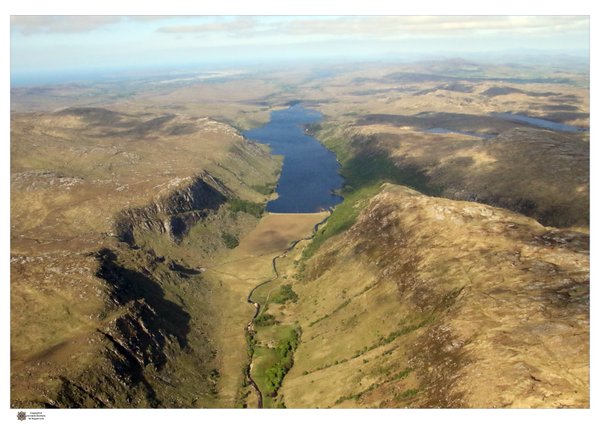Featured image: Glenveagh National Park
New research has found why most Irish earthquakes happen in the northern part of Ireland.
Donegal has recorded its fair share of trembles in recent years, while Tyrone, Antrim, Rockall and the Malin sea have also been rocked by quakes.
Last month, Donegal’s strongest earthquake in 10 years was recorded near Glenveagh National Park. The 2.5 magnitude earthquake was felt in the early hours of Saturday 7th May and reported by hundreds of local residents.
Now, a team of researchers from the Dublin Institute for Advanced Studies (DIAS) and the University of Cambridge has discovered that variations in the thickness of tectonic plates relate directly to the distribution and risk of earthquakes in Ireland, Britain and around the world.
Their research helped in answering the longstanding question of why the seismicity – the measure of the frequency of earthquakes in a region – between Ireland and Britain is surprisingly uneven.
The research team employed a technique called ‘seismic tomography’ which uses seismic waves generated by earthquakes to create computer-generated 3D images of Earth’s interior. The data they collected revealed variations in the thickness of the solid outer part of Earth, also known as the lithosphere, across Ireland and Britain.
Ireland is mostly underlain by cold, thick mechanically strong lithosphere whereas most of Britain—by thinner warmer lithosphere. The findings explain why most Irish earthquakes happen in the northern part of Ireland – the one area where the lithosphere is thinner, warmer and weaker.
Western Britain also has a relatively thin lithosphere and numerous earthquakes. By contrast, southeastern England and eastern Scotland have thicker lithosphere and fewer earthquakes.
Commenting on their work and its significance, Professor Sergei Lebedev of DIAS and University of Cambridge, who led the team, said, “After 100 years of research, seismic tomography has provided the answer to the long-standing puzzle of why Ireland and Britain’s seismicity is uneven. Ireland and Britain share their tectonic history and are both far from active plate boundaries, however, the distribution of earthquakes is not what you would expect.
“Discovering the cause of these variations is important for our understanding of the basic mechanisms of earthquakes that occur within stable continental interiors and for assessing hazards in various regions prone to seismic activity.
“Our knowledge and data on the distribution of micro-seismicity within Ireland and its underlying causes have been uncertain due to a lack of sampling of the island, until recently. We’ve been able to use the data from recently deployed seismic stations in Ireland such as the DIAS station at Inch Island, Donegal and map the seismicity of Ireland in greater detail than ever before.”
Also, commenting on the discovery, Professor Chris Bean, Head of Geophysics at DIAS said, “These research findings are highly significant as they show that even within the same plate, local details are important. We now have the reasoning behind why more earthquakes are occurring in Britain than in Ireland, and new insight into where the likelihood of occurrence is higher.”
The research team, led by Professor Sergei Lebedev, included James Grannell (DIAS), Dr Pierre Arroucau (EDF-DIPNN-DI-TEGG, France), Dr Raffaele Bonadio (DIAS and Cambridge), Dr Nicola Piana Agostinetti (University of Milano-Bicocca, Italy), and Professor Christopher Bean (DIAS).
This research was funded by Science Foundations Ireland. The paper is available at: https://academic.oup.com/gji/advance-article/doi/10.1093/gji/ggad194/7157104








